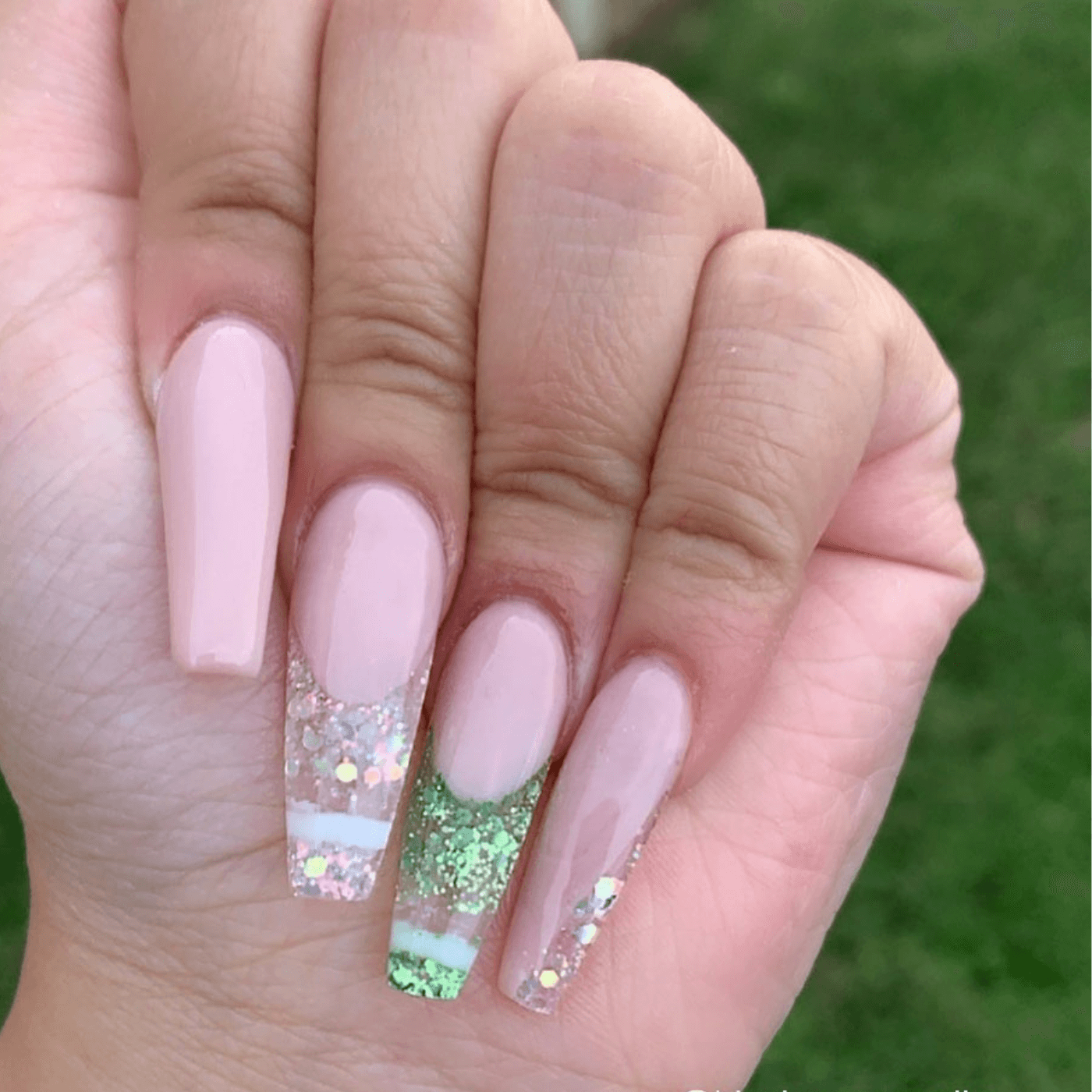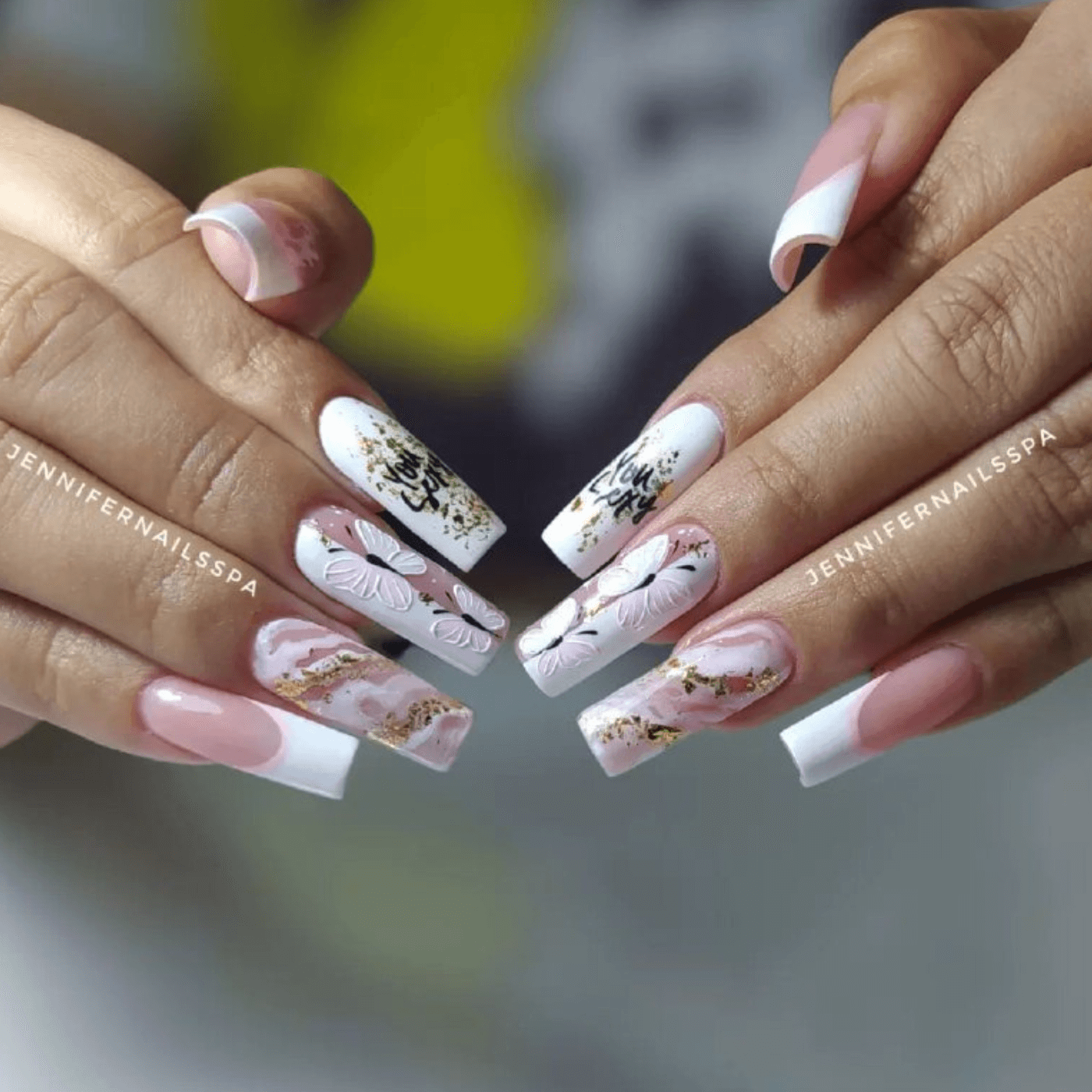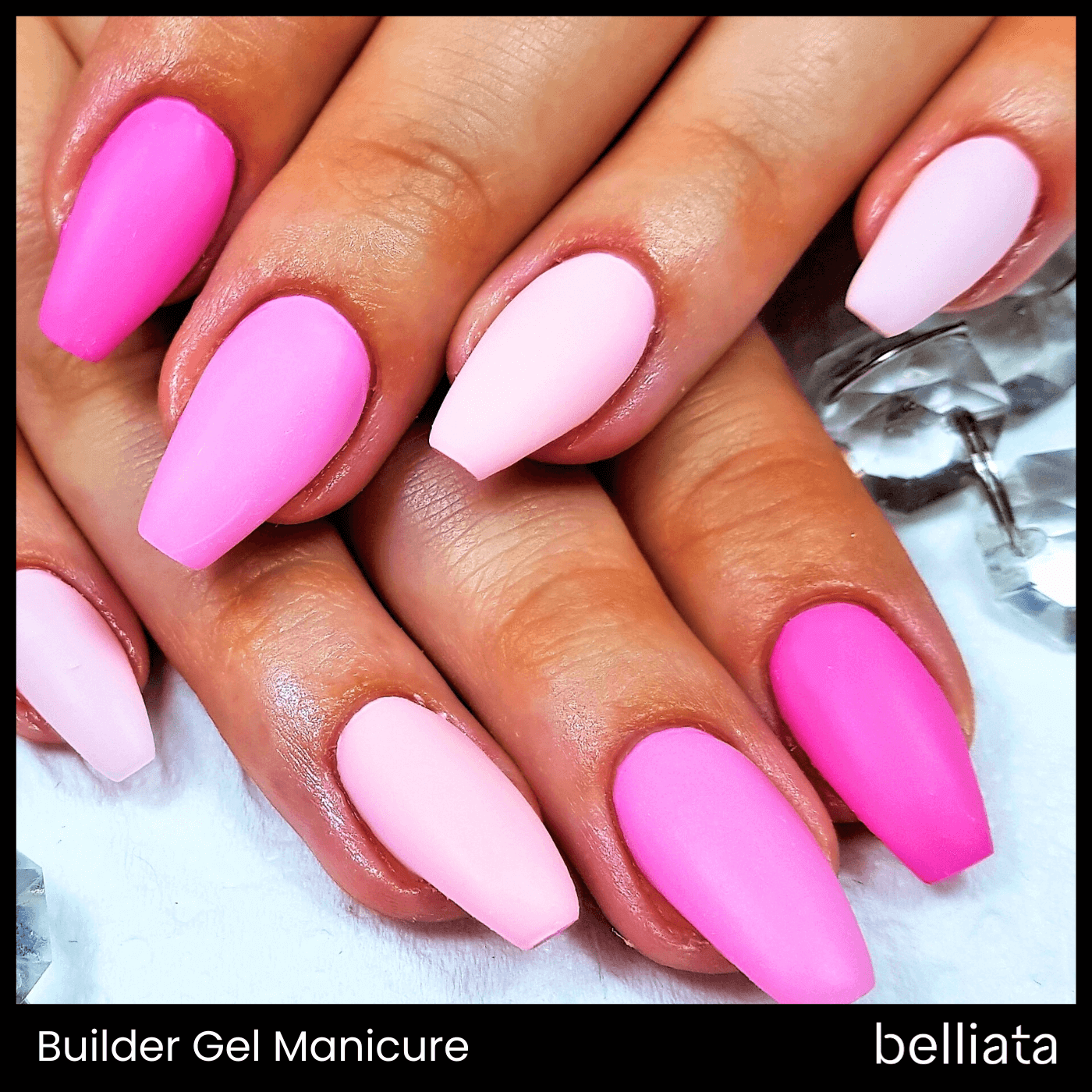Hard Gel Manicure 2026: Everything You Need to Know
Posted on Nov 4, 2024
Thinking about trying a hard gel manicure in 2026? Whether you’re new to the world of gel manicures or already a fan, hard gel offers a durable and flexible option that can give your natural nails a beautiful, polished finish. From nail extensions to overlays, this treatment is a favorite among nail lovers who want strength, length, and a chip-free finish. Curious about how hard gel compares to other manicure options? Check out our ultimate guide to different manicure types, including the benefits of hard gel manicures.
What Is a Hard Gel Manicure?

Belliata OP Nails Johnson City
View on Instagram
A hard gel manicure uses a gel product that is applied to natural nails or nail tips and then cured under a UV light or nail lamp. Unlike soft gel or gel polish, hard gels are more durable and can be used to add length to the nails. To learn more about soft gel as an alternative, check out our article on soft gel manicures, offering a lightweight and flexible finish. Hard gels are perfect for creating durable and long-lasting nail extensions that can handle daily wear and tear.
Hard gel is known for its self-leveling properties, which means it spreads smoothly over the nail, creating a protective coating that’s still flexible enough to handle pressure. The result? Nails look polished, strong, and beautiful, without the bulkiness of acrylics. If you’re interested in the benefits of acrylic alternatives, explore our guide on dip powder versus gel nails, where durability meets creativity.
Types of Hard Gel Manicures

Belliata Kim Nails Johnson City
View on Instagram
Hard Gel Overlay Manicure
A hard gel overlay manicure is perfect if you want to enhance your natural nail strength without adding length. It provides a durable coating that makes your nails less likely to chip or break. If overlays aren’t your style, explore Russian manicures, known for their precise application and flawless results.
Hard Gel Extensions
If you’re looking to add length to your nails, hard gel extensions might be your go-to. These are created by applying hard gel over nail tips or full coverage tips and then curing them. This technique is excellent for achieving long nails with a natural appearance. Curious about other techniques for creating beautiful nail extensions? Check out builder gel manicures, which combine strength and versatility.
Russian Hard Gel Manicure
Popular for its precision and clean finish, the Russian hard gel manicure focuses on perfect cuticle work and detailed shaping. The hard gel is applied carefully to provide a smooth, polished surface that looks flawless. This style is perfect for anyone who loves an immaculate, long-lasting manicure. To learn more about the meticulous techniques involved, check out our post on Russian manicures, which prioritize precision and attention to detail.
Japanese Hard Gel Manicure
Known for its thin and flexible formula, the Japanese hard gel manicure is ideal for those who prefer a more natural look. The gel is lightweight yet strong, giving your nails that polished effect with a bit of flexibility. This technique combines durability with elegance, making it a favorite for those who value understated beauty. For a closer look at Japanese nail styles, explore our guide on Japanese manicures, which emphasize natural aesthetics and healthy nails.
Hard Gel French Manicure
Love the classic look? The hard gel French manicure gives you the timeless polished effect with added durability, ensuring your tips stay crisp and chip-free for weeks. This style blends the sophistication of the French tip with the robust properties of hard gel, making it perfect for both everyday wear and special occasions. For more inspiration on timeless nail styles, don’t miss our nail ideas collection, featuring modern twists on classic designs.
The Process of Applying Hard Gel

Belliata Jennifer Nail Spa Nashville
View on Instagram
Preparation
Start by filing and shaping the natural nails or nail tips. Clean the nails and gently push back the cuticle. This step is crucial to ensure proper adhesion and long-lasting results. For a detailed guide on preparing nails for enhancements, check out our post on dry manicures, a technique that reduces moisture exposure for healthier nails.
Base Coat Application
Apply a base coat to the nails, which acts as a sticky layer that helps the hard gel adhere. This layer is essential for creating a smooth foundation and ensuring the longevity of the manicure. If you’re exploring other base options, you might want to learn about dip powder nails, a durable alternative for achieving a flawless base.
Applying the Hard Gel
Use a brush to apply the hard gel in thin coats. Each layer is cured under a UV light or LED lamp to set it. You can mix hard gels to achieve different colors and shapes, or even use hard gel extensions to add length to your nails. This process creates a strong, polished look that can withstand everyday wear. For more information on achieving flawless enhancements, explore our guide on American manicures, which emphasize simplicity and elegance.
Curing and Shaping
After the hard gel has been cured, it can be filed and shaped to your liking. Whether you’re aiming for a natural look or adding strength with nail extensions, shaping allows for personalization. If you’re interested in other customizable manicure techniques, check out our article on Russian manicures, renowned for their detailed precision and stylish finishes.
Top Coat and Finish
Finish the manicure by applying a top coat and curing it to add shine and seal the hard gel. This final step ensures a chip-free, durable manicure that can last for weeks without losing its gloss. For more long-lasting options, explore our post on shellac manicures, celebrated for their enduring shine and vibrant colors.
Hard Gel vs. Other Nail Enhancements

Belliata BK Nails & Spa Old Hickory
View on Instagram
Hard Gel vs. Soft Gel
Soft gel is easier to soak off but doesn’t offer the same level of strength as hard gel. If you’re looking for a lighter option for natural nails, soft gel may be the way to go. However, for durability and extensions, hard gels are unbeatable. For more on soft gel, explore our article on soft gel manicures, a lightweight and flexible solution.
Hard Gel vs. Acrylic
Acrylics are known for their strength but can feel thicker and less flexible than hard gel. Hard gel provides a natural, glossy finish that feels durable yet flexible. Plus, hard gels are less prone to chipping and breaking. For a detailed comparison, read our guide on dip powder versus gel nails and how each method stacks up.
Hard Gel vs. Dip Powder
Dip powder is great for those who want a quick and full-coverage tip without the curing process, but it doesn’t offer the same level of protective coating or flexibility as hard gel. To learn more about dip powder applications and benefits, check out our guide on dip powder manicures, which are perfect for quick, durable nail enhancements.
The Removal Process

Belliata Jennifer Nail Spa Nashville
View on Instagram
Removing hard gel requires soaking the nails in acetone and then gently filing away the softened gel. While the process takes longer than removing soft gel, it can be done safely at home or in a salon with the right tools. If you’re unsure about safe removal techniques, explore our guide on removing dip powder nails without damaging your natural nails.
Tips for Long-Lasting Hard Gel Manicures
- Ensure your nails are clean and free of oil before starting the process to ensure proper adhesion.
- Always cure each layer fully under a UV or LED lamp to avoid peeling or chipping.
- Regularly apply cuticle oil to keep the skin around your nails soft and hydrated. For more tips on maintaining nail health, check out our article on male manicures, emphasizing clean and well-groomed nails.
- Visit a trusted salon or nail tech for professional application if you’re unsure how to do a hard gel manicure at home.
Recommendations
With its durable finish and ability to add length, a hard gel manicure can transform your nails into a stylish, polished look. Whether you choose a Russian hard gel manicure or a Japanese hard gel manicure, this technique is ideal for anyone looking to keep their nails strong, flexible, and flawless. Explore more creative options in our nail ideas guide, featuring trendy designs and styles for every occasion.
h3>Citations
Nail anatomy
https://www.sciencedirect.com/science/
Finger nail plate shape and size for personal identification – a possible low technology method for the developing world - Preliminary report
https://www.ajol.info/index.php/ajhs/article/view/30795
Physics of nail conditions: why do ingrown nails always happen in the big toes?
https://iopscience.iop.org/article/

Jemma
Jemma is a creative nail artist with a passion for all things nails. Her expertise encompasses manicures, the latest trends in nail art, and selecting the perfect colors to bring her clients' visions to life. When she's not working with clients, Jemma loves scouring social media for inspiration, staying on top of the ever-evolving world of nail art trends.

